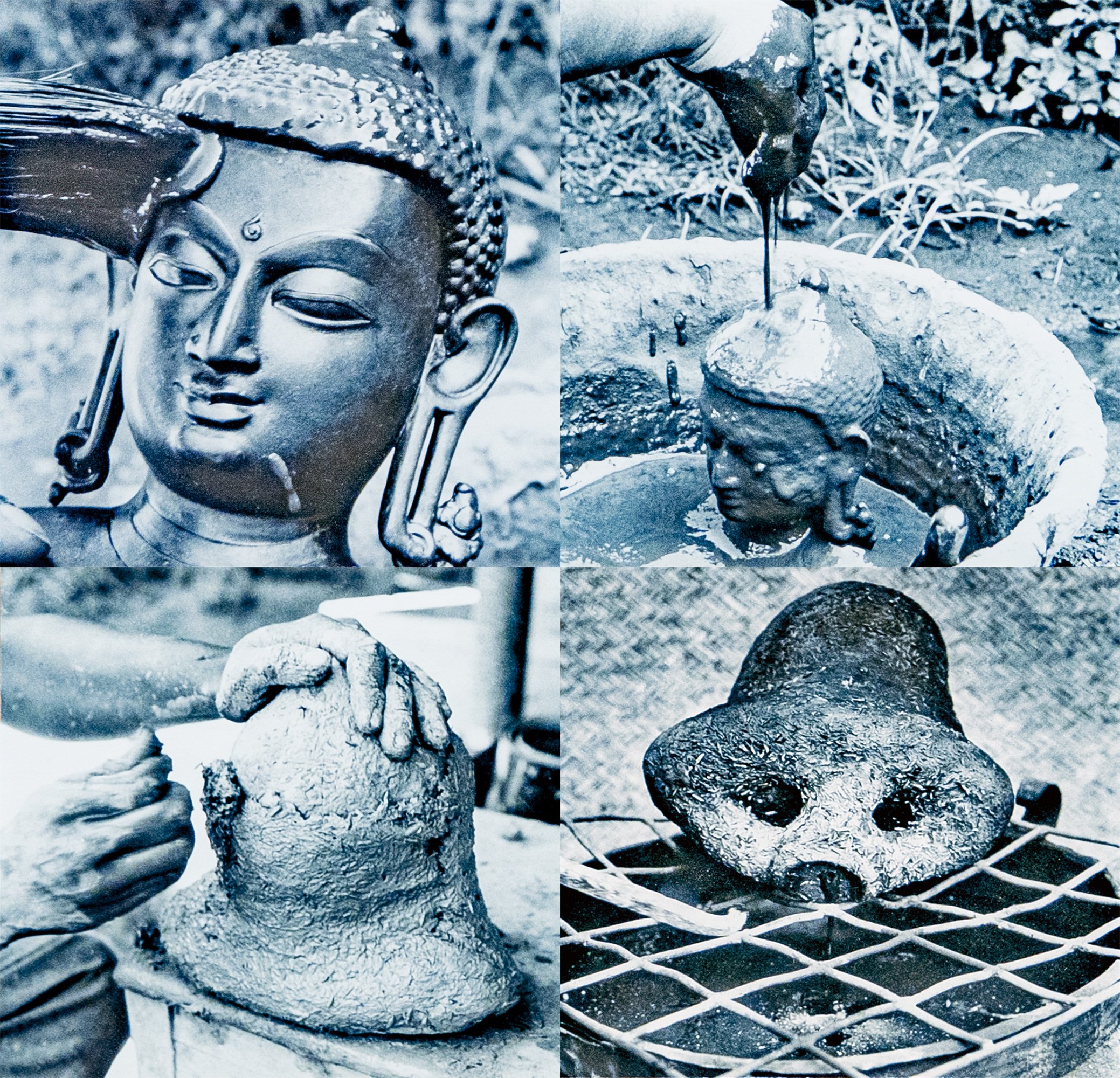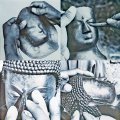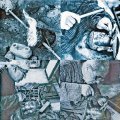Patan Museum (Nepal): photo 211
Photo 211 of 212 in Gallery: Patan Museum (Nepal)

Image title: Wax modelling process
Description of the photo
In a bust such as this example, the head, ears and shoulders are always made separately and joined together. With a full body sculpture the torso, arms, hands, legs, feet and pedestal would also be done in halves, joined and finally all assembled. Seams are completely smoothed out with the buffalo horn spatula. Final adjustments to the image are made by adding and shaping thin layers of molten wax or scraping it off with various sized and shaped knives.
The last step in the wax modelling process of this bust is to attach wax channels to connect chin to chest and ears to shoulders. These channels help distribute the molten metal evenly throughout the mold during the process of casting. Finally the artist carefully goes over the wax image to make sure that no excess wax is present and that the surfaces are smooth. Refinements can be done at this stage by adding soft wax or by cutting away wax with thin steel blades. The completed wax image is what will be “lost” and replaced by molten metal and must therefore be perfect in all its details.
The clay mold to surround the wax is made in four stages. First the wax model is dipped in a fine sieved mixture of clay, cow-dung, and water. If the image is to be hollow the mold is also coated inside and requires a clay core. The mold is dried in the shade, dipped in a second layer of the same clay mixture and dried again. Third and fourth clay layers, with increasingly higher proportions of cow-dung and added rice husks, are applied by hand and dried in the sun. For hollow-cast images, iron nails are driven through all exterior clay layers, the wax model, and into the clay core. The nails keep the core from displacing when the wax is removed and the molten metal added.
The cowdung has an adhesive quality that ensures proper binding of the clay mixture to the wax. It also regulates the temperature nitrogen element keeps the mold at the high its temperature required for casting and its porosity allows the heat of the molten metal to escape so that the metal can solidify rapidly. When the mold is complete, its bottom layer is scraped away to just expose the wax and waxen channels. Pouring spouts are attached and mud-coated. On the casting day, the clay mold is heated and drained of the wax which is not actually lost but collected and saved for future work.
Gallery information:
The Patan Museum is located on the Durbar square of Patan (Lalitpur/Lalitapura, Kathmandu, Nepal) which is associated Keshav Narayan Chowk (Keshavnarayan)—a form of Lord Vishnu. Being listed as a World Heritage Site, the whole of Durbar square is filled with exquisite temples, sculptures and other ancient structures, of which the ancient history history can be traced to the Malla Kings of Lalitpur. It is an important site for both Buddhism and Hinduism.
Photo details:
High resolution:
Download file
Size: 2.37 MB
Resolution: 2078 x 2000
© Photograph by Gabe Hiemstra.
License: CC BY-NC-ND 4.0

